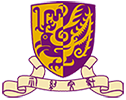MATH4900D - Seminar - 2020/21
General Information
Lecturer
-
Prof. Yi-Jen LEE
- Office: 412 AB1
- Email:
Time and Venue
- Lecture: Tuesdays 3:30-6:15pm via Zoom (meeting ID& password announced via email and Blackboard)
Course Description
Celestial mechanics has attracted the interest of some of the greatest mathematical minds in history, from the ancient Greeks to the present day, and has motivated many significant mathematical developments. We shall discuss some outstanding problems and approaches to them, from the Kepler’s problem (describing the motion of a planet around a star), the famous 3-body problem (e.g. the motions of the sun, the earth and the moon), to the more general n-body problem.
References
- Geiges--The Geometry of Celestial Mechanics
- Arnold & Kozlov & Neishtadt--Mathematical Aspects of Classical and Celestial Mechanics
- Siegel & Moser--Lectures on Celestial Dynamics
- Fitzpatrick--An Introduction to Celestial Mechanics
- Pollard--Mathematical Introduction to Celestial Mechanics
- Szebehely--Theory of Orbits-The restricted 3-body problem
- Meyer, K. R., Hall, G. R., and Offin, D.--Introduction to Hamiltonian Dynamical Systems and the N-Body Problem
- Valtonen et al.--The Three-body Problem from Pythagoras to Hawking (history and physics)
- Valtonen & Karttunen--The three-body problem
- Wintner--The analytical foundations of celestial mechanics
- Moser & Zehnder--Notes on Dynamical systems
Lecture Notes
- Recording: Sept 22 (Passcode: eBL$iEZ7)
- Recording: Sept 29 (Passcode: 4FM4vHn^ )--first 30 minutes missing
- Recording: Oct 6 (Passcode: m1UX3J?n )
- Recording: Oct 13 (Passcode: 0J6%SZVC )
- Recording: Oct 20 (Passcode: =Jy+^5W4 )
- Recording: Nov 10 (Passcode: $7K44V=5 )
Class Notes
- Slides: Sept 22 (Chan)
- Slides: Sept 29 (Wong)
- Slides: Sept 29 (Lam)
- Slides: Oct 20 (Chan)
- Slides: Nov 3 (Wong)
- Slides: Nov 3 (Lam)
Assignments
- Sep 22 [Team 1: Chan & Fang] Geiges Ch.1-4
- Sep 29 [Team 2: Lam & Wong] Geiges Ch. 5-6
- Oct 6 [Team 3: Chui & Kwok] Geiges Ch 7
- Oct 13 [Team 4: Tse & Tsoi] Geiges Sections 8.1-8.3
- Oct 20 [Team 1] Geiges Sections 8.4-8.6
- Nov 3 [Team 2] Hamiltonian systems Cf. e.g. Geiges Ch 9; Pollard Ch. 3; Fitzpatrick Ch. 6
- Nov 10 [Team 3] Geiges Ch 10 + Geiges Section 8.7
- Nov 17 [Team 4] Integrable systems, Cf. e.g. [W] Sec. 167-240; Arnold et al. Ch.3, 5; Perturbation theory cf. e.g. Pollard Ch.4; Valtonen & Karttunen Ch. 9-10; Fitzpatrick Ch. 9-10; Arnold et al. Ch.6; or Periodic Orbits cf. e.g. Szebehely Ch.8, Siegel &Moser Ch.2, Moser & Zehnder Ch.2; and/or More on Hamiltonian formulations in celestial mechanics Cf. e.g. Pollard Ch. 3; Szebehely Chs. 5, 7.
Assessment Scheme
| Oral presentations (your own) | 80% | |
| Oral presentations (your teammate) | 20% |
Useful Links
Honesty in Academic Work
The Chinese University of Hong Kong places very high importance on honesty in academic work submitted by students, and adopts a policy of zero tolerance on cheating and plagiarism. Any related offence will lead to disciplinary action including termination of studies at the University. Although cases of cheating or plagiarism are rare at the University, everyone should make himself / herself familiar with the content of the following website:
http://www.cuhk.edu.hk/policy/academichonesty/and thereby help avoid any practice that would not be acceptable.
Assessment Policy Last updated: November 11, 2020 15:34:04



